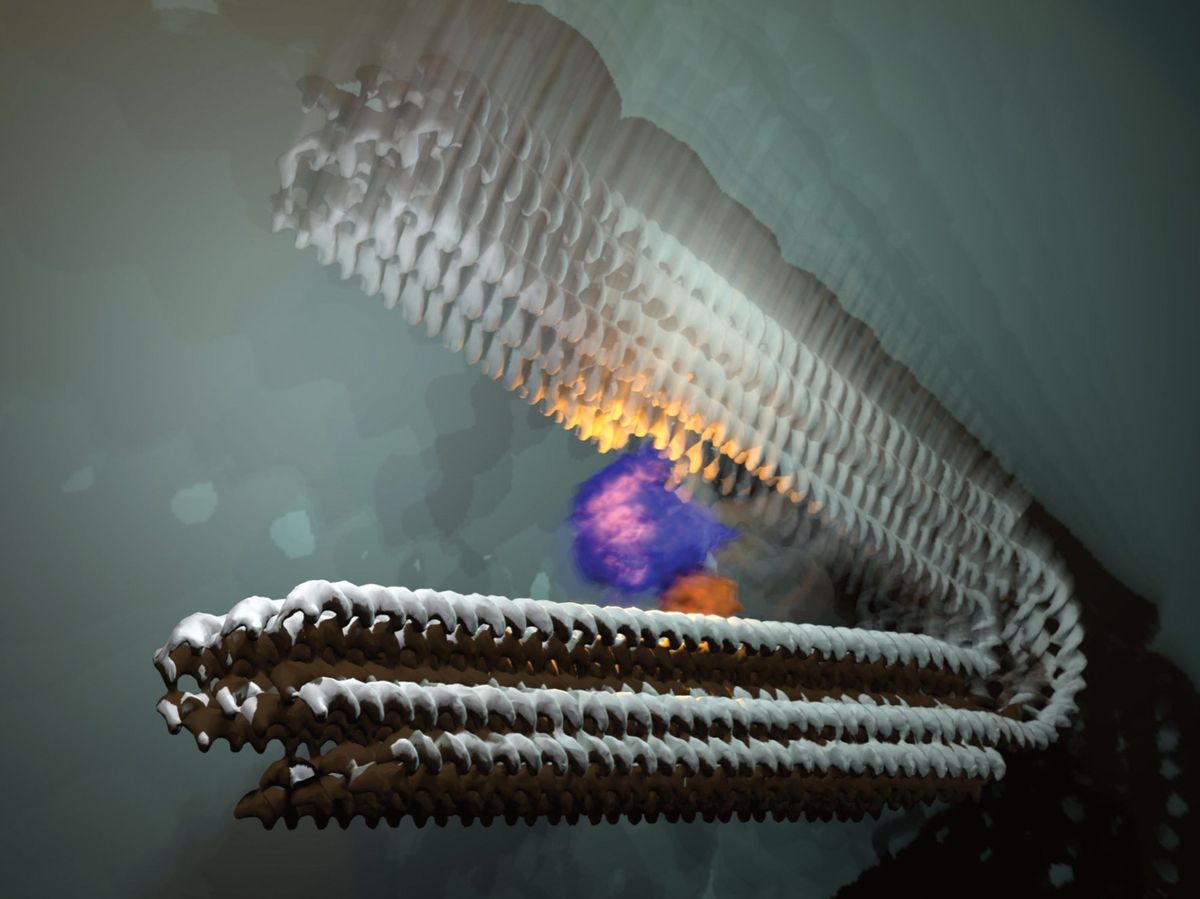Taking advantage of DNA’s ability to store information, researchers have over the past decade been working on data storage systems and digital logic circuits built on the biological molecule. DNA’s complex physical structure has also led to the exciting technique of DNA origami, with which researchers have made tiny nanoscale machines.
In the latest example of clever DNA origami, an international team of researchers have now developed a nanoengine that can perform pulsing movements. The pulsing nanomotor should be easy to couple to other tiny molecular machines, driving them to construct drugs and electronics one building block at a time. “We have designed the nanoengine as a broadly applicable module that can be coupled to all possible origami structures to set them in motion,” says Michael Famulok, a professor of chemical biology at the University of Bonn.
The tiny nanomotors look like the spring handgrips used for forearm-strengthening exercises. They have two rigid arms connected by a spring in a V-shaped structure that rhythmically open and close as long as the solution they are in has a chemical fuel.
University of Bonn
DNA origami involves carefully designing DNA sequences that can fold, twist, and staple together at the right places to assemble into preconceived structures. Using DNA origami tricks, scientists have made many different types of DNA nanomotors and machines. Many of these nanoassemblies are driven by Brownian motion: the constant, random movement of molecules.
Famulok and his colleagues have been working on building DNA nanosystems that are driven by chemical energy. Specifically, the fuel they use is RNA polymerase. This is the natural enzyme that translates DNA molecules into single-stranded RNA molecules, which are then used to synthesize proteins. In 2018, the researchers reported a nanomachine made up of a DNA ring, driven by RNA polymerase, that could be set into motion like a wheel.
In the new work, two stiff DNA origami arms are connected by a short DNA sequence that serves as a release spring. The whole structure is 70 by 70 by 12 nanometers in size. The researchers connected RNA polymerase on one of the arms near the DNA spring strand. The RNA grabs the DNA strand and starts translating its A, C, G, and T building blocks letter by letter, in the process pulling the strand and bringing the handles closer.
When it reaches the end of the DNA strand, a special termination sequence instructs the polymerase to let go of the strand. “The energy stored in the spring causes it to snap open,” Famulok says, and the arms return to their original positions. “Then the whole process starts over again. Once you have set it in motion, as long as [RNA polymerase] is present, it will continue to close and open.”
The biological molecules are robust, and there was no indication that the DNA spring would wear out in the laboratory experiments, Famulok says.
As a demonstration, the researchers attached the nanoengine to another V-shaped DNA origami arm that did not have a spring. As the nanoengine closed and snapped open, it drove the second “follower” unit to shut and release along with it.
Famulok’s vision is to use the pulsing nanomotor to drive several DNA origami machines “in a sort of molecular assembly line” that could build complex chemicals such as artificial proteins, or drive chemical reactions that are otherwise difficult to achieve. To do that, the researchers are now trying to devise a clutch-type mechanism that would detach itself from one follower unit and couple to another one in response to a chemical or other trigger signal.
- Nanoscale Interconnects Come to Self-Assembling DNA Origami ›
- DNA Origami Leaves a Trace on Silicon ›
Prachi Patel is a freelance journalist based in Pittsburgh. She writes about energy, biotechnology, materials science, nanotechnology, and computing.



